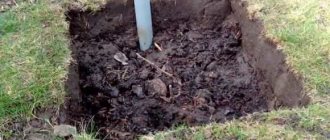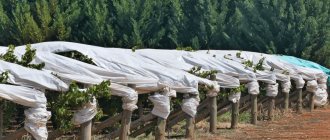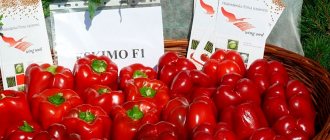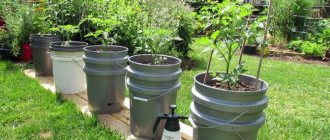The warming climate in many regions means that gardeners simply do not know at what temperature they should cover grapes for the winter, and what to do if the desired weather does not arrive. We will find the answer and tell you what type of shelter for grapes is preferable and when is the best time to carry out this procedure.
Of course, no one will give an exact calendar answer to the question of when to cover grapes for the winter. It depends on the region, the weather, and the age of your vine. But there are still certain signs that the period for this work has arrived and it cannot be postponed any longer.
When to cover grapes in the fall in different regions
In most regions of Russia and neighboring countries, gardeners are trying to grow grapes. In some places, the southern climate and mild winters allow it to grow without shelter and additional effort, but in the main part of the territory it is still impossible to do without insulation.
When and how to cover grapes in the Moscow region
For those who live in central Russia, the period of sheltering grapes begins in late November - early December. Remember that the vine must survive the first frost while open, harden off and ripen - this is part of the natural process. Therefore, when the autumn rains have stopped and a stable temperature has established from –5 to –8°C (but not more than –10°C), you need to let the grapes stand for 3-5 days and only then start covering.
If frost still doesn’t come, and you’re wondering whether it’s possible to cover grapes in rainy weather, don’t rush! Such a covering will only lead to soaking and then cracking of the bark on the vine and will destroy your grapes even more surely than the complete absence of covering material.
When and how to cover grapes in the Urals
Growing grapes in the Urals is not easy - you need to strictly follow agricultural technology and the timing of processing the vines. You need to cover the grapes around mid-November, when the soil is thoroughly frozen and no longer thaws. In the spring, return frosts often occur, but they themselves are not as dangerous to the grapes as high humidity, so you cannot lay the shoots directly on the ground - be sure to place boards or a trellis under the vine.
In winter, the layer of snow on the plant should be at least 40 cm - you need to monitor this and, if necessary, throw snow on the bushes. The hot spring sun is also dangerous for grape buds, so even after the snow melts, the vines must be covered with non-woven material to protect them from burns.
When and how to cover grapes in Siberia
In the harsh Siberian climate, when the first frosts begin as early as September, only the most hardened and frost-resistant grape varieties can survive. Preparing them for winter should begin in the first autumn month.
- Winter-hardy grape varieties - Russian and American
What types of grapes are the most winter-hardy and feel good in the middle zone?
To ensure that the bushes survive the winter, it is best to prepare special trenches filled with mulch for them. Place the vines in them and cover them with wooden shields on top. And remember, no matter how reliable the shelter is, it must be covered with at least half a meter of snow, and opened no earlier than April.
Preparation
Before proceeding directly to covering the stem, it is necessary to carry out preliminary preparation. The process includes several stages:
- Trimming. It is recommended to leave the length of the shoots approximately 40-60 cm, while their color and number of buds are not yet so important. Many summer residents advise leaving 4-5 buds. The procedure is carried out after the leaves dry out and fall off.
To prevent the vine from “crying,” young grapes should be pruned in the fall.
- Treatment for various diseases. Many gardeners advise spraying with fungicides “Hom” and “Ordan”. These drugs have proven themselves in the fight and prevention of major diseases to which the crop is exposed.
The use of copper or iron sulfate is not recommended. There is an opinion that such drugs can burn the kidneys.
In addition to spraying the drug solution from a spray bottle, it is also necessary to moderately spill it on the soil around the seedling.
- Watering and fertilizing. When diluting fertilizer preparations, the dosage recommended by the manufacturer should be strictly followed. Typically, fertilizing is carried out in September.
How to properly cover grapes for the winter
There are two options for covering grapes for the winter - dry and regular. In the first case, the vines are isolated from the mulch using agrofibre or film and only then covered with covering material, and in the second, the mulch is poured directly onto the vines. The first option is more labor-intensive, reliable, but only protects if winter has set in immediately and no more thaws are predicted. This method is used in regions with harsh climates and strong winds. The second is suitable for vineyards in central Russia and regions with snowy winters.
Before sheltering, the grapes must be properly prepared for wintering.
- How to prepare grapes for winter - all work in calendar order
If you grow grapes not in Tuscany, but in central Russia, then preparing the delicate vines for winter will take a lot of time.
Covering it correctly
First, it is important to prepare the bushes: as necessary, they are watered, fed, pruned and treated with pests and infections.
Can:
- spud;
- partially cover;
- cover completely.
For first-years, hilling is often used as a wintering shelter. This is enough for young grapes. For hilling, it is recommended to create a dense mound of soil with a height of at least 10 cm, but no more than 25-30 cm.
How can you cover grapes?
There are more than a dozen options for covering material for grapes. The choice depends only on what exactly you have available.
How to cover grapes with soil
The most accessible shelter for grapes is earth or turf. With the onset of frost, cover the vine with a 10-centimeter layer, and after 3-4 weeks add the same amount. Please note that it is advisable to prepare the soil for this in advance and store it dry in bags.
Pros : economical, fast.
Cons : unaesthetic, freezing is possible, you need a place to store bags of earth.
How to cover grapes with snow
If the winter in your area is consistently snowy, use the most natural method of shelter - hide the vines in a large snowdrift (at least 50 cm). True, without additional effort it will not form on its own - you will have to not only lay the vines on boards or a lattice (not forgetting to secure the shoots with metal brackets), but also regularly throw snow on top and compact it so that it does not blow away in the wind.
Pros : economical, fast, no need to clean up in the spring.
Cons : May melt in the middle of winter.
How to cover grapes with straw or reeds
With the onset of frost, lay the vines on boards and cover with a layer of straw 20 cm thick. After 2-3 weeks, add another similar layer on top and secure the straw with spunbond, arches or by covering it with snow.
Pros : breathable, environmentally friendly, cheap.
Disadvantages : straw needs to be purchased or prepared in advance, without an additional covering layer it is blown by the wind, straw will have to be removed in the spring, it often becomes a home for rodents.
Mice often live in shelters made of straw and reeds, so be sure to place poisonous baits near the vines.
How to cover grapes with slate
Covering with slate is not very popular, but it also has a right to life, especially if you have a lot of this material left after construction. Dig ditches 20 cm deep along the grape bushes, wrap the vines in burlap, pin them to the ground, cover them with pieces of slate and cover them with earth.
Pros : slate can be used for several years in a row.
Cons : slate can break during use, and not everyone has it.
How to cover grapes with spunbond
For regions with a warm climate, covering with agrofibre is suitable, but if you have regular frosts or temperature changes in winter, it is better to combine the material with any natural mulch. There are three ways to cover grapes with spunbond:
- directly on the trellises;
- wrapping the vines and bending them to the ground;
- covering the vines with any natural material (leaves, straw), and then covering the top with spunbond.
It is worth remembering that spunbond is a very light material, so you need to securely attach it to the vine or ground.
Pros : environmentally friendly, reusable, breathable, aesthetically pleasing.
Disadvantages : high cost, moisture transmission, leading to soaking and icing of the vines, suitable only for regions with mild winters.
How to cover grapes with spruce branches
Those who have a coniferous forest nearby are incredibly lucky. Spruce and pine spruce branches are an ideal shelter for grapes. Place a layer of spruce branches 30-40 cm thick on the vines and forget about them until spring.
Pros : free, fast, rodents do not settle, fungus and mold do not appear, breathable.
Cons : spruce branches are not available everywhere.
How to cover grapes with foliage
You can cover grapes with leaves in the same way as with straw. True, the leaves will need to be prepared in advance and stored in dry bags until frost. Leaves from diseased trees are not suitable, because fungal spores or bacteria can overwinter on them.
Pros : breathable, environmentally friendly, cheap material.
Disadvantages : leaves need to be prepared in advance, without an additional covering layer they are blown by the wind, in the spring the foliage will have to be raked and burned, it often becomes a home for rodents, and can be a source of fungal diseases.
How to cover grapes with roofing felt
Ruberoid is suitable for covering grapes in areas with mild winters with little snow. The material is spread over the grooves in which the burlap-wrapped grapes are placed. Along the edges of the ditches, you should always leave uncovered areas for ventilation or regularly remove the roofing material so that air can flow to the vines and roots of the bushes.
Pros : used for several seasons in a row, easy to spread and clean.
Cons : airtight, so ventilation is required, without an additional layer of mulch, suitable only for regions with mild climates.
Is it possible to cover grapes with sawdust?
You can use sawdust to cover grapes in winter, but you need to know a few subtleties. Like other natural materials, sawdust absorbs moisture from the ground and then freezes, which leads to the death of the buds, or even the entire vine.
To avoid this, the soil around the bush is covered with a layer of vapor barrier material or film, then the vines are bent down, covered with sawdust so that nothing sticks out on the surface, and covered on top with slate, a wooden board or other material that prevents precipitation from getting on the sawdust.
Pros : economical, environmentally friendly.
Cons : require additional materials, can become a home for rodents, need to be removed in the spring.
Is it possible to cover grapes with film?
Of course, the usual film used for greenhouses is far from the best option for covering grapes for the winter. It does not allow air and moisture to pass through, and in such conditions the vine is highly likely to die. Modern polymer films of different colors are a completely different matter. If you cover the arches with them, under which there will be bent vines, then the winter will pass without loss.
Choose a film of medium thickness so that it does not tear during work, and light shades or with a mirror coating effect so that on sunny days the air inside the shelter does not heat up.
Pros : durability, options for different budgets.
Cons : if the technology is not followed, it leads to the death of grapes.
How to open bushes correctly
In spring, the vine must be removed from its shelter. The film, panels, roofing felt and soil are removed. In the south, bushes can be opened in early April. In the northern regions, the time comes at the end of the month. The further north you go, the later the protection is removed. In some regions, warming occurs only in May.
Grapes growing in the Volga region, the Urals and the Moscow region very often suffer from early frosts and harsh winters. If you cover the bushes correctly, then such problems will not arise, and the harvest will be safe and sound.
How to cover young grapes for the winter
Don't know how to cover grapes in the first winter? Almost the same as an adult, and sometimes even easier, because the size of the bushes is small, and there is no need to remove them from the trellis or pin them to the ground. It is enough to build small solid cones around the seedlings from thick wire, chain-link mesh or ordinary pegs, then fill the cone with any breathable mulch, and tie the entire structure on top with spunbond or foil insulation.
If you choose an airtight material for shelter, be sure to leave 1-2 holes in it so that air can flow to the plant.
To cover grape seedlings for the winter, you will need the same thing, only it is not necessary to make a separate shelter for each bush - you can place arcs over the entire ridge.
Features of sheltering an old grape vine
It is customary to harden the “old” vine with light frost (about -3 -5 degrees). This has a good effect on future yields, as well as on the taste of the berries.
Before sheltering, it is necessary to collect the entire crop and tear off all the foliage. The bunches remaining on the vine will begin to rot, which will lead to fungal infection of the entire bush.
The old vine is pruned, adhering to the rules for forming a bush.
Do not let the shoots lie on bare ground. Be sure to add a covering material that will protect the vine from the cold that comes from the ground.
A mature shrub grows greatly, but still try to cover the maximum possible area under the plant. As a last resort, at least mulch with sawdust or dry grass.
What to do if you didn’t have time to cover the grapes for the winter?
It happens that you have not been at the dacha for 1-2 weeks, and during this time, instead of frost, snow has fallen directly onto the damp soil. What to do with grapes in this case?
You will still have to lay the vines on a wooden mat, and then proceed depending on the weather. If the snow has already fallen completely and there is no thaw in the forecast, pour high (40-50 cm) snowdrifts on the vineyard and maintain them in this condition all winter.
If above-zero temperatures are still predicted ahead, simply wrap the vines with spunbond, and apply full cover when the snow melts.
Not sure if you even need to cover your grapes for the winter? Conduct an experiment by covering one part of your grape plantings using one of the proposed methods, and leave the second to fate. And in a year, based on the condition of the vines, you will know exactly the answer to this question.
When to remove insulation
They begin to remove the covering material in mid-April - early May, after the snow has melted. First of all, when the temperature reaches around 5ºC, remove the film protecting from moisture. Since night temperatures during this period are often negative, a temporary greenhouse should be built over the vine from arcs and covering material. You need to gradually accustom the vine to the sun, first removing the spunbond for several hours on cloudy days, and always covering it from frost at night. You can completely remove the shelter when the temperature is positive and no night frosts or recurrent cold are expected. For additional stimulation of the kidneys and warming up the root system, the grapes are shed 2-3 liters once. water heated to 30ºC.











